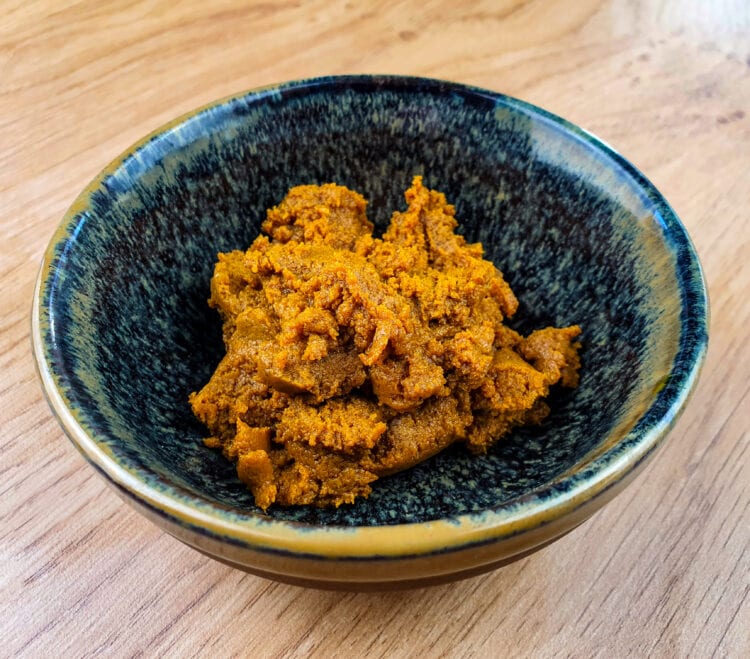What is Thai Yellow Curry?
Yellow curry paste is an essential ingredient in Thai cuisine and other Southeast Asian cuisines. Just like red curry paste and green curry paste, it’s a spicy and aromatic paste used to add flavor to a variety of dishes, such as curries, soups, stir-fries, and marinades.
It’s made from a blend of herbs and spices, including turmeric—which gives it its yellow color—black pepper, yellow or red chilies, galangal (a root similar to ginger), lemongrass, coriander, cumin, and many other ingredients. Everything is ground together into a smooth paste, making it easy to use in cooking.
The Origins of Thai Yellow Curry
Yellow curry paste comes from Thailand, where it’s used in many traditional Thai dishes like Thai chicken curry. Thai yellow curry is actually a blend of several spices, many of which were brought over by Indian and Arab traders.
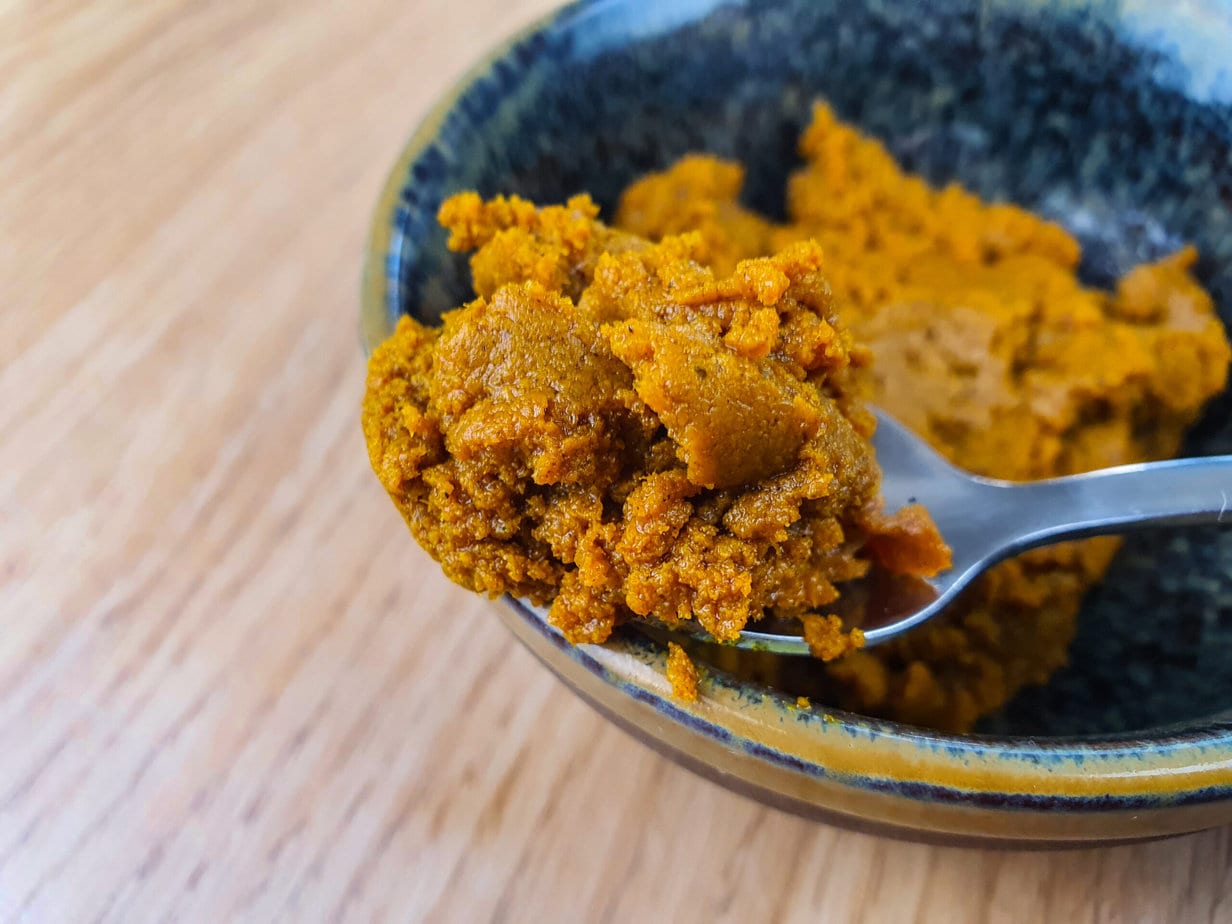
Turmeric, one of the main ingredients in yellow curry paste, originally comes from India and has been used in Indian cooking for thousands of years. Cumin, another key spice, comes from the Mediterranean region.
Fun fact: Besides its culinary uses, cumin was long used in Egypt for mummifying pharaohs. Later on, it was introduced to Southeast Asia and is also widely used in Indian cuisine.
Most of the ingredients in yellow curry paste have various origins thanks to the spice trade of the time, but the paste itself is a true Thai creation.
What Does Thai Yellow Curry Taste Like?
Yellow curry paste has a spicy, slightly sweet, and mildly tangy flavor. Turmeric gives the paste its signature color and a gentle, earthy taste.
Coriander brings freshness to the palate. Lemongrass, much like lemon, adds a citrus note, while chili powder brings a warm, spicy kick.
It’s also very common to add coconut milk to thin out the mixture and mellow the flavors. All in all, it’s an exotic paste that blends flavors which really complement each other!
Yellow, Green, and Red Curry: What’s the Difference?
Although they share some ingredients, there are big differences in color, flavor, and how they’re used. People often say that green curry paste is the spiciest, but it really depends on your own taste.
Green curry paste is made with fresh green chilies, which give it a bright green color and its signature spicy flavor. Red curry paste is usually a bit milder and gets its deep red color from red chilies (or chili powder) used in the mix.
You can use both pastes in dishes with meat, poultry, seafood, or even noodles (try the Thai red curry noodles recipe!).
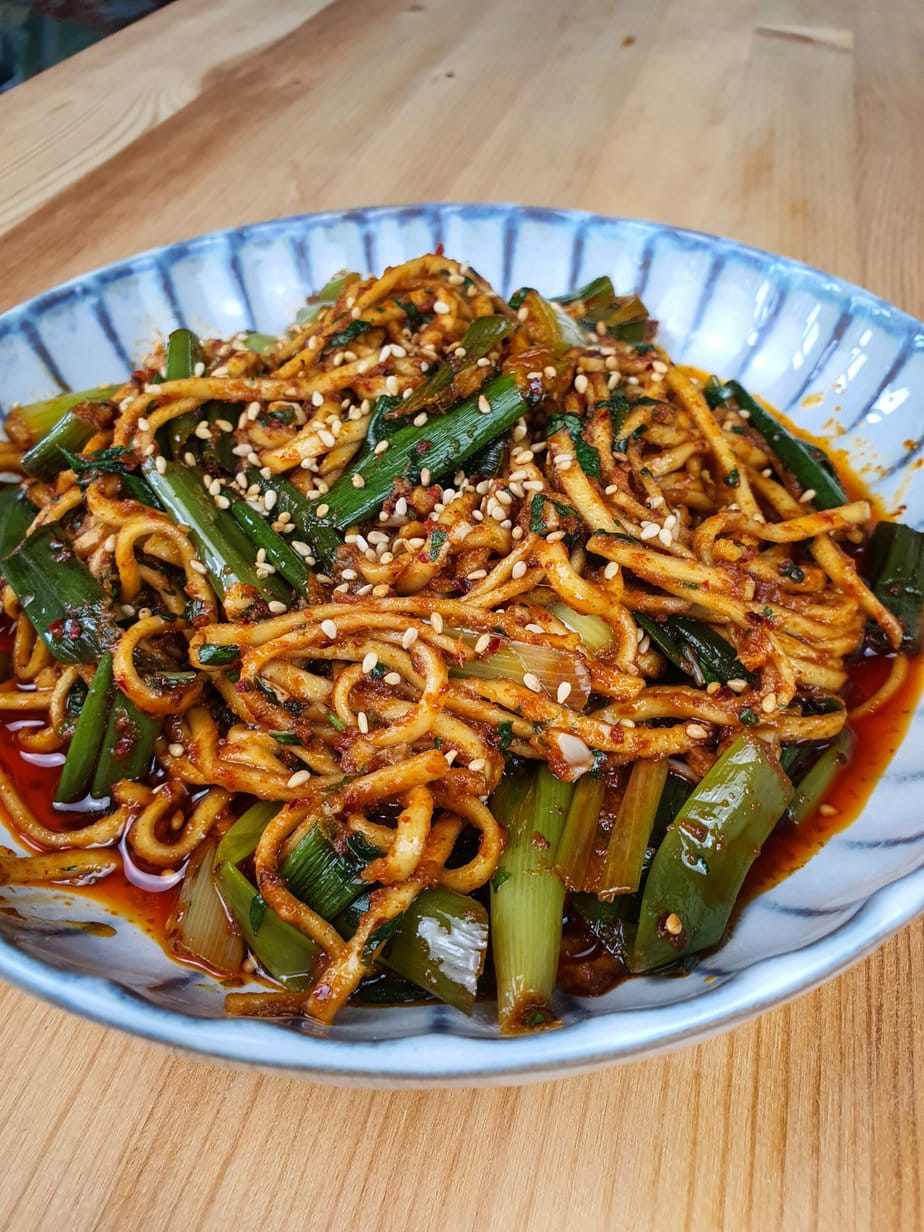
As for yellow curry paste, it’s generally the mildest of the three. It’s made with turmeric, which is actually quite gentle, so it’s often used in milder curries with vegetables and delicate meats.
Cooking with Thai Yellow Curry
A staple in Thai cooking, yellow curry paste can add flavor and depth to all kinds of dishes. It works with noodles, rice, or stir-fried veggies—it’s a really versatile ingredient.
Looking for a recipe idea? Try Thai yellow curry noodles. Depending on your taste, you can swap out the curry pastes. If you want a milder noodle dish, just use yellow curry paste instead of red.
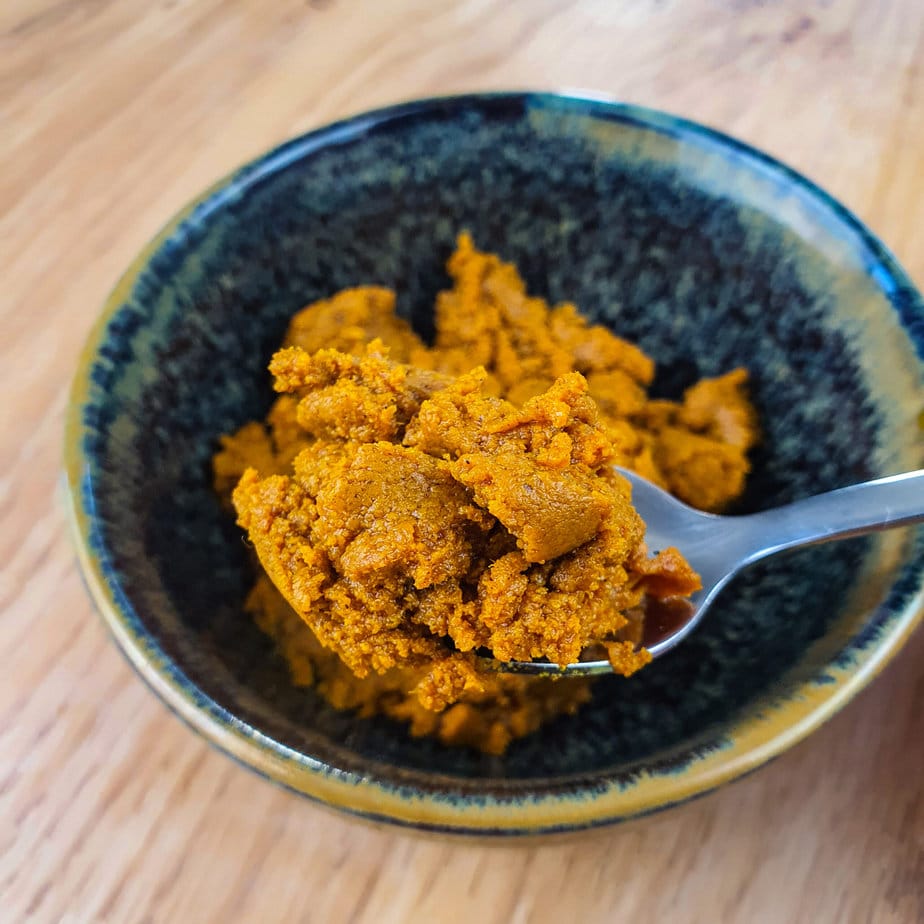
In Thai cuisine, yellow curry paste is also often used in chicken curries. Just sauté the curry paste with chicken pieces, vegetables, and coconut milk. Serve with rice and you’re all set!
You’ll notice yellow curry paste goes especially well with poultry, so don’t hesitate to try it in chicken recipes. Another option: use yellow curry paste in dressings and marinades to add a subtle kick. You can even stir a little into the sauce for pad Thai for extra flavor.
How to Substitute Thai Yellow Curry Paste
If you can’t find yellow curry paste (though it’s pretty easy to get these days), you can just use curry powder. Add some fresh ginger and you’ll have a mix that’s very close to the paste.
Still can’t find any? Simply swap yellow curry for red curry paste or green curry paste. Just be aware that those are much spicier than yellow! It all depends on what you’re in the mood for and your recipe.
Where to Find Thai Yellow Curry
Since it’s a common ingredient in Thai cooking, you can find yellow curry paste in most Asian grocery stores.
Some larger supermarkets also carry it. If you can’t find it locally, you can always order online from websites specializing in Asian ingredients. Just make sure to check the expiration date before buying to ensure it’s fresh.
How to Store Thai Yellow Curry Paste
Keep yellow curry paste in an airtight container in the fridge to preserve its freshness and flavor. It will keep for 2 to 3 weeks, or even longer—just check the expiration date on the jar. If it’s homemade, it’ll last about a week.
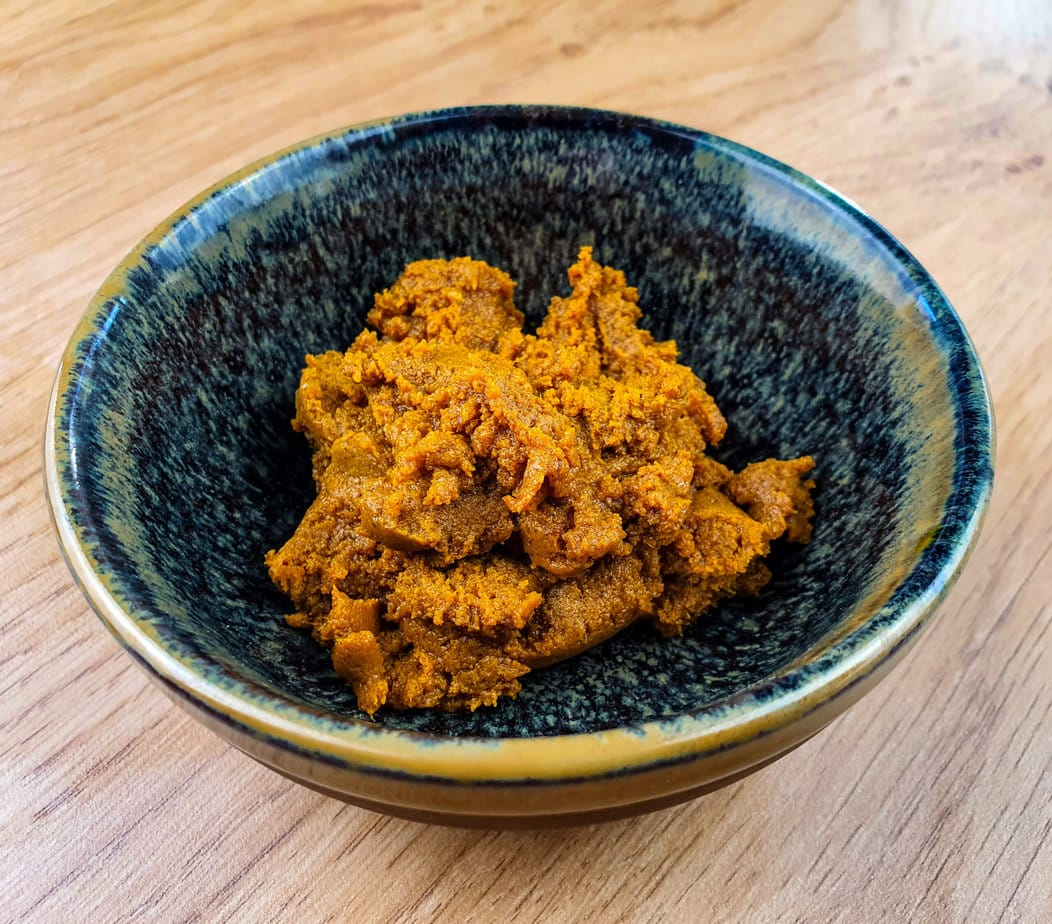
Ingredients
- 4 large shallots
- 4 large heads of garlic not individual cloves — use WHOLE HEADS of garlic
- 1 15 cm piece of fresh ginger
- 5 dried whole Thai chiles
- 1.5 tablespoons salt
- 2 tablespoons turmeric
- 2 tablespoons mild curry powder
- 2 teaspoons ground coriander
- 3 tablespoons lemongrass paste
- 4 grams dried cilantro leaves and stems
Instructions
- Preheat the oven to 180°C.
- Prepare the aromatics: peel the shallots, drizzle with oil, and wrap in foil. Peel the ginger and slice thinly.4 large shallots, 1 15 cm piece of fresh ginger
- Arrange in a single layer, drizzle with oil, and wrap in foil. Remove the outer skin from the garlic. Trim the pointed tops from the heads so the cloves are partially exposed. Drizzle with oil and wrap each head of garlic in foil.4 large heads of garlic
Roasting the Aromatics
- Place all foil packets on a baking sheet. Bake for 15 minutes.
- Remove the ginger (it should be soft), increase the temperature to 200°C, and roast the shallots and garlic for another 30 minutes, until golden and very fragrant.
- Once cool, squeeze the garlic cloves out of their skins.
The Chiles
- While the aromatics roast, cover the chiles with boiling water to rehydrate. Soak for 15 minutes, then drain.5 dried whole Thai chiles
Make the Paste
- Place everything in a high-powered blender. Pulse or blend until the yellow curry paste is as smooth as you like.1.5 tablespoons salt, 2 tablespoons turmeric, 2 tablespoons mild curry powder, 2 teaspoons ground coriander, 3 tablespoons lemongrass paste, 4 grams dried cilantro leaves and stems
